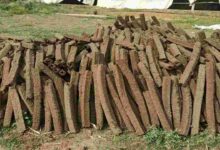From doubt to success: This farmer from Assam invested Rs 3 lakh of his own earnings to start dragon fruit farming
From doubt to success: The transformation of Dimbaeswar Swargiary from a conventional farmer to a cutting-edge horticulturalist is proof of his inventiveness, tenacity, and capacity for self-learning. Dimbaeswar, who is from Maidang Chapori in Jonai, Assam, has had a strong love for farming from an early age. His instructor asked him what he wanted to do for a living, and his answer was unequivocal and straightforward: he wanted to be a farmer. This goal was a calling that he followed with unflinching commitment, not merely a fantasy from his youth.

Dimbaeswar’s Journey to Horticulture
As a child, Dimbaeswar worked as a farmhand, practicing traditional agricultural techniques with his father. But as he grew older, Dimbaeswar saw the benefits of updating and diversifying their farming methods. He made the decision to pursue horticulture, which signaled the start of a life-changing adventure.
Dragon fruit cultivation on ten bighas of land was one of his most ambitious endeavors. Viewing YouTube videos gave rise to the concept of farming dragon fruit, a contemporary take on learning about agriculture. This was a difficult choice to make. Dragon fruit growing is risky and expensive, particularly considering that Assam’s soil has never been used for these kinds of crops. Despite these difficulties, Dimbaeswar put 3 lakh rupees into his dragon fruit business.
His tenacity paid off, even if the first several years were difficult. In only four years, Dimbaeswar has recouped his investment as of right now. Considering that dragon fruit bushes may bear fruit for up to 35 years and need five years to develop, this accomplishment is even more astounding. Dimbaeswar’s early success not only confirms the validity of his creative strategy, but it also bodes well for his future agricultural pursuits.
Accepting Variety and Ecological Responsibility
Dimbaeswar, however, didn’t stop there. He has planted a range of different crops in the voids created by his dragon fruit farm’s poles and rows by using a holistic and sustainable strategy. He uses mixed farming techniques to cultivate important plants like pomegranates alongside tomatoes, chiles, strawberries, and mint. In addition to optimizing land usage, this diversity lowers the hazards associated with depending only on one crop.
Apart from his gardening activities, Dimbaeswar has just begun growing peanuts on three bighas of land using seeds that were given to him by the Dhemaji district agricultural office. Officials from the Dhemaji District Agricultural Science Center have shown interest in and respect for this new endeavor after being pleased by the creative and effective methods used on his farm.
The Journey of Dimbaeswar from Expertise to YouTube
Dimbaeswar’s success is a product of both his perseverance and hard work, as well as his openness to change and grow. When questioned about his educational journey, Dimbaeswar modestly acknowledges YouTube as his first information source. But as he became more experienced, he started to depend more on his own perceptions and observations. Acknowledging the need of professional advice, he made contact with the district agricultural science center. Their suggestions and criticism have been very helpful to him in honing his methods and fixing any errors.
A Global Inspiration for Sustainable Farming
The tale of Dimbaeswar Swargiary is a brilliant illustration of how cutting-edge techniques may be profitably and sustainably combined with customary ways. Farmers worldwide may find encouragement in their transition from conventional farming to contemporary horticulture, which was fueled by self-learning and a proactive mindset. His creative methods support the sustainability of Assamese agriculture’s ecology while also increasing output.
The success story of Dimbaeswar Swargiary combines perseverance, ingenuity, and enthusiasm. His experience serves as a reminder of the value of lifelong learning, flexibility, and the guts to take chances. Many more farmers will surely be motivated by Dimbaeswar’s narrative to adopt contemporary farming methods and find success on their own as he continues to explore new agricultural frontiers.

